Gazing across stubble fields to the roofless shell of Strichen House, it’s hard to imagine this decaying mansion once entertained the rich and famous within its “handsome” walls.
Built in 1821 for ‘Mormond Tam’ Fraser, who later became the 12th Lord Lovat, it was once described as a “large, elegant house in the Grecian style” with a portico of fluted Doric columns.
Today, all that remains is a sad jumble of skeletal ruins.
Having seen archive photographs of the building in its heyday, when it hosted lavish parties and was surrounded by stunning landscaped grounds, woodlands and gardens, it’s clear to see that it’s very much a shadow of its former, glorious self.
I skirted the edge of a stubble field to reach it, and my heart sank when I saw one side of the house – where the portico of Doric columns had once proudly stood – was partially obscured by an ugly lean-to farm structure.
Be warned – precarious structure
The building can be accessed via a series of crumbling entrances, but the advice, as always, is to take great care.
It’s a dangerous structure in a precarious state – with the likelihood of falling masonry and rotting timbers sky high – so I absolutely do not encourage entering it.
Still, it’s a fascinating place to explore, and those who do might discover: a couple of dank cellars, old fireplaces, the remains of lath and plaster, and a lot of big trees.
I caught up with local historian Fraser Henderson Mitchell to find out more.
Fraser lamented that the house was in a “sorry state”, and told me the “barn-like structure” was added to the front elevation in the 1960s.
“That destroyed any semblance of the grace the house once possessed,” he added.
Taking up the story, he continued: “The house was built in 1821 by Mrs Fraser, the widow of Alexander Fraser, the 9th Laird of Strichen.
“In 1815 Mrs Fraser’s only son Thomas Fraser, 10th Laird of Strichen, had inherited the lands of Lovat in Inverness-shire and would eventually become known as Lord Lovat.”
In 1855, the estate came into the possession of the Baird Family, owners of the famous Gartsherrie Iron Works.
“George Baird died at Strichen House in 1870 and from there on it’s a sorry tale,” Fraser said.
However, around 1913, the famous Aberdeen-born opera singer Mary Garden leased the house, holding lavish parties “for the great and good”.
Opera legend was a regular at Strichen House
In her prime, Garden was one of the world’s most famous women.
During a glittering career, flowers were flung adoringly at her feet on stages throughout America and Europe.
She even made it onto the cover of Time magazine in 1930, and Noel Coward called her “one of the greatest operatic actresses in the world”.
The changing face of Strichen estate
In 1920 the tenant was Archibald Maconochie, a businessman and politician who served as the MP for East Aberdeenshire from 1900 to 1906.
He was one of the Maconochie brothers of the tinned foods dynasty.
“In 1925 the estate was sold off mostly to sitting tenants with the mansion house becoming known as the Strichen Hydro Hotel,” said Fraser.
During the 1930s, the Hydro’s 160 acres of landscaped grounds included a full-size golf course, formal gardens and lakes.
“The Hydro’s existence was short-lived and during the years of the Second World War it was inhabited by the military, which put an end to any hopes of a revival,” said Fraser.
“In the late 50s it was unroofed for tax purposes.”
Sadly, the grounds beautifully landscaped by designer William Sawrey Gilpin that once surrounded the house are now obscured by farmland.
But you can still spot the remains of an extensive walled garden.
Strichen Stone Circle
I’d first spotted Strichen House from the nearby recumbent stone circle, perched on a hill high above the derelict structure.
This, too, has a chequered existence, having been destroyed at least twice.
“James Boswell and Samuel Johnson visited the circle on their tour of Scotland in 1773,” elaborated Fraser.
“But they were more impressed with the lovely mature beech trees which lined the avenue up to the big house.
“In 1830 the tenant farmer levelled the stone circle but was quickly told to reinstate it by the then Laird. He did so, but not in the correct position.
“Then around 1980 archaeologist Aubrey Burl arrived with an extensive team of experts and put things to right.”
Beware of the the bull!
Today, the circle is a fine place to drink in views of the rolling Aberdeenshire countryside, but getting there could involve an encounter with a bull, as a very weathered old signpost on a gate warns.
The field through which you need to walk to reach it can be muddy and poached up by cattle, so it’s a good idea to wear wellies.
Next to the stone circle is a 19th Century doocot, which is worth popping into, despite the fact it’s roofless.
Walk takes in lake, circle and house
If you’re in the area, it’s a nice wee walk from Strichen Lake up to the stone circle, and, perhaps, down to the derelict mansion.
I parked near The Lodge cafe and strolled along the lake-side, stopping to watch some swans and ducks having a whale of a time.
I wondered why the body of water is called a ‘lake’, and not a loch. Is it because it’s man-made, and not quite big enough to be deemed a loch?
Fraser said it was always referred to locally as the “pond” in his younger years, but most people simply call it the “lake” these days.
After I’d gazed into its glassy waters, I meandered through community woodland, before heading up a grassy path towards the stone circle.
Unlike Boswell and Johnson, I wasn’t at all disappointed by what I discovered. And the views down to Strichen House were well worth the hike.
- Strichen House is on the Buildings at Risk Register and is noted to be at high risk.
- The mansion was built in 1821 to replace the 17th Century so-called ‘Palace’ of Strichen.
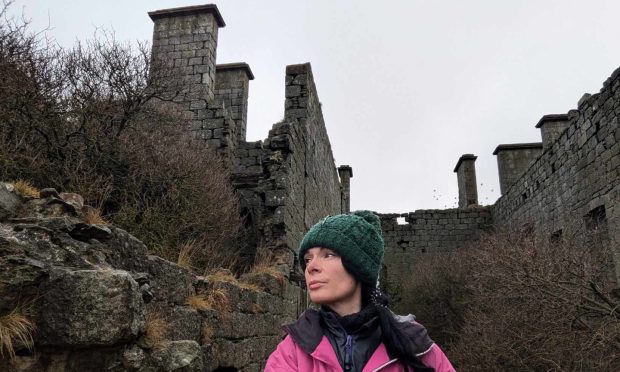
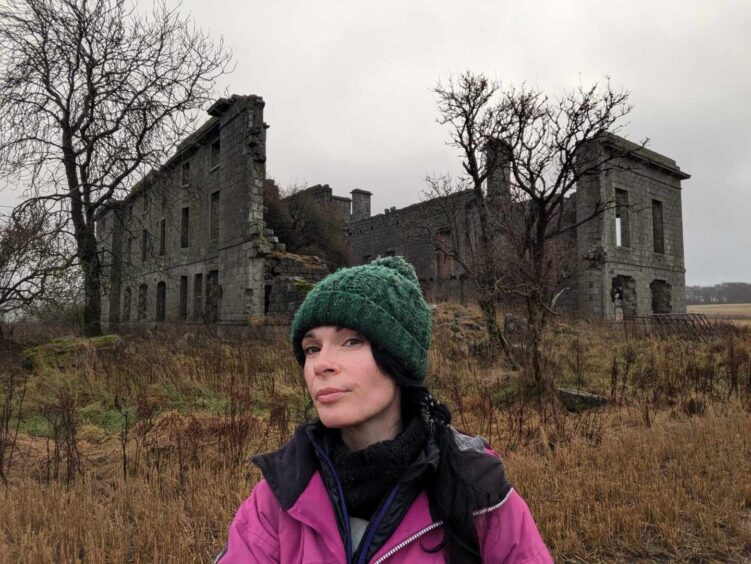
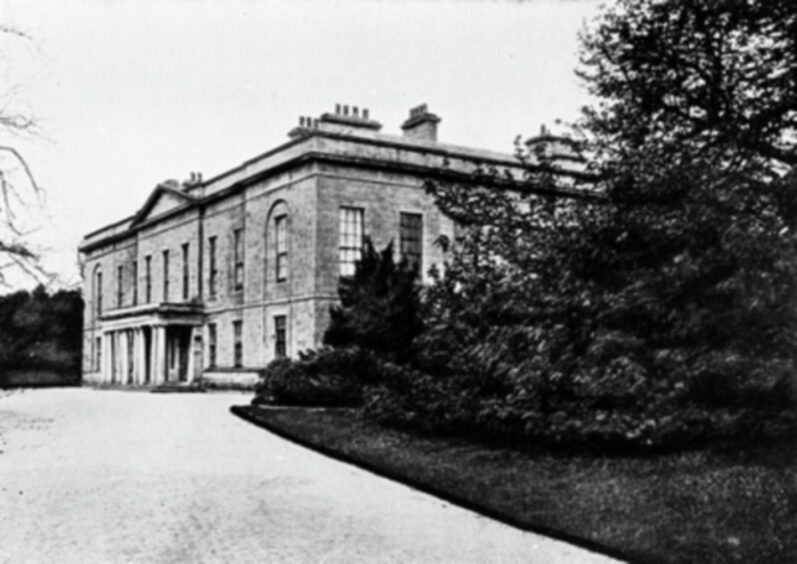
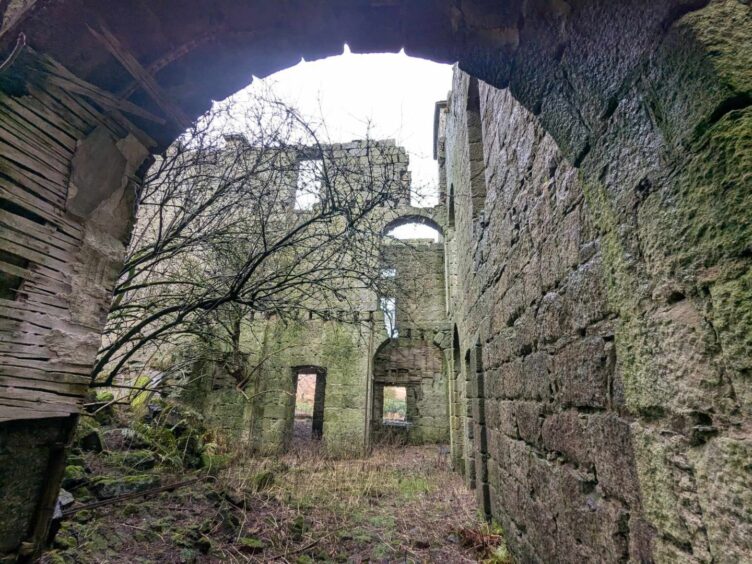
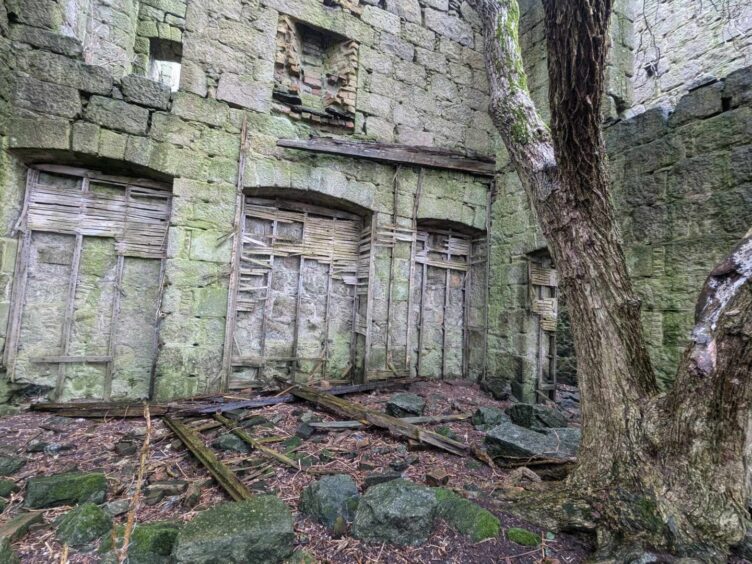

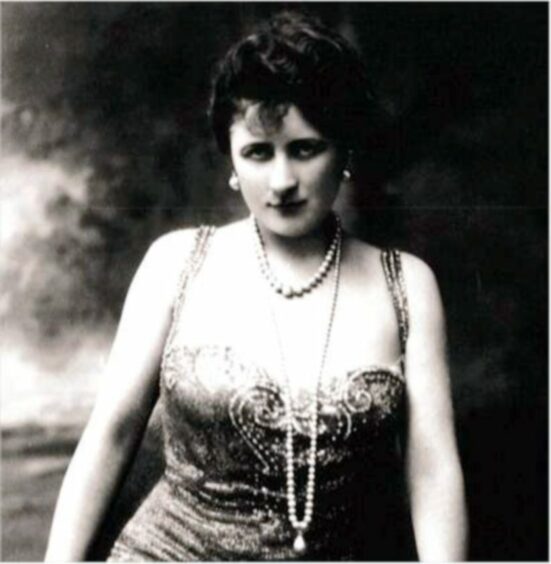
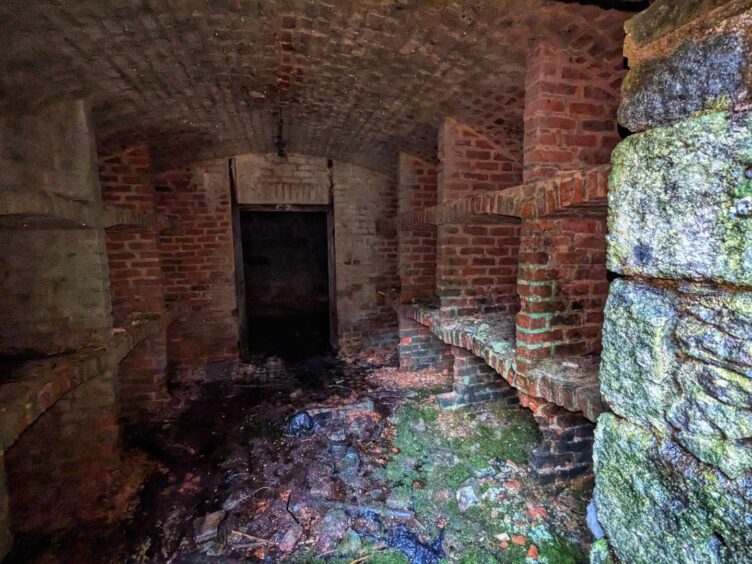
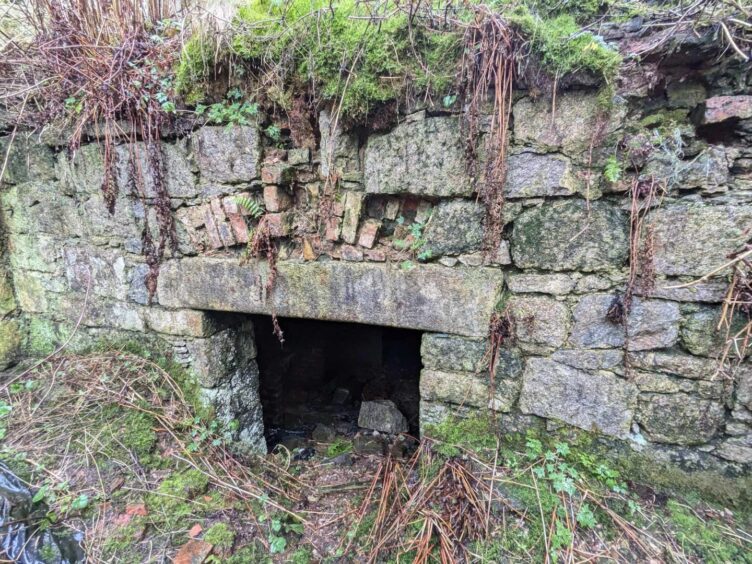
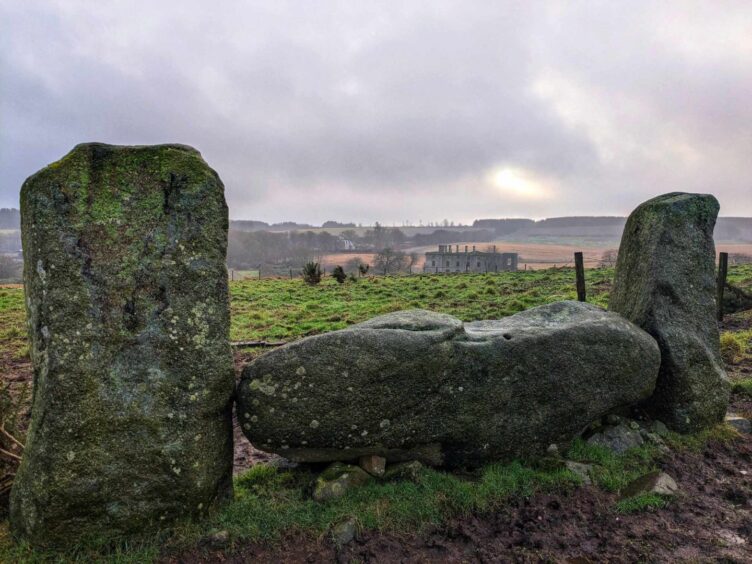
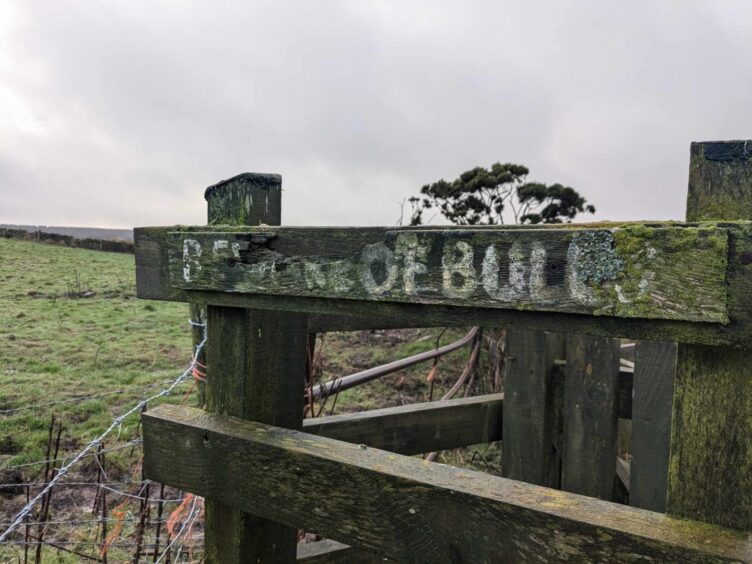
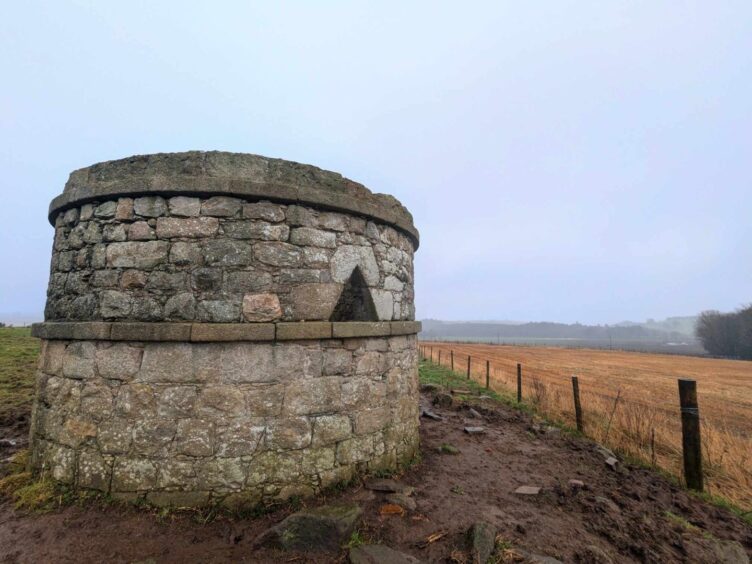
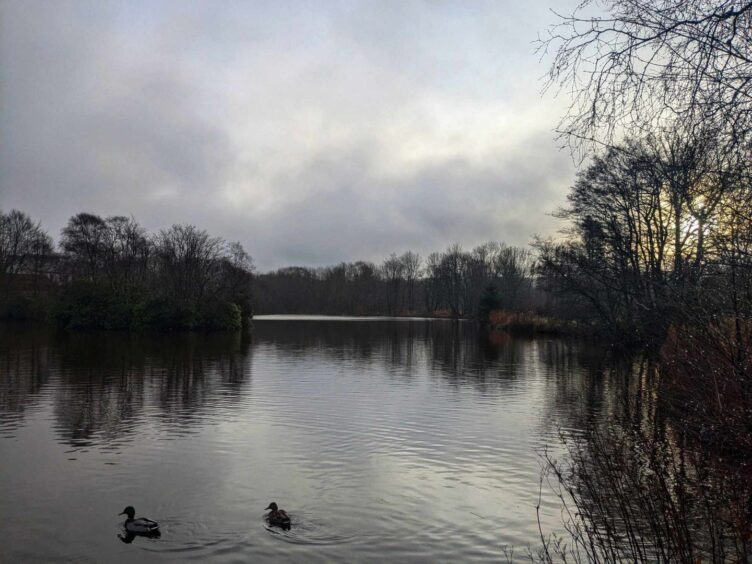
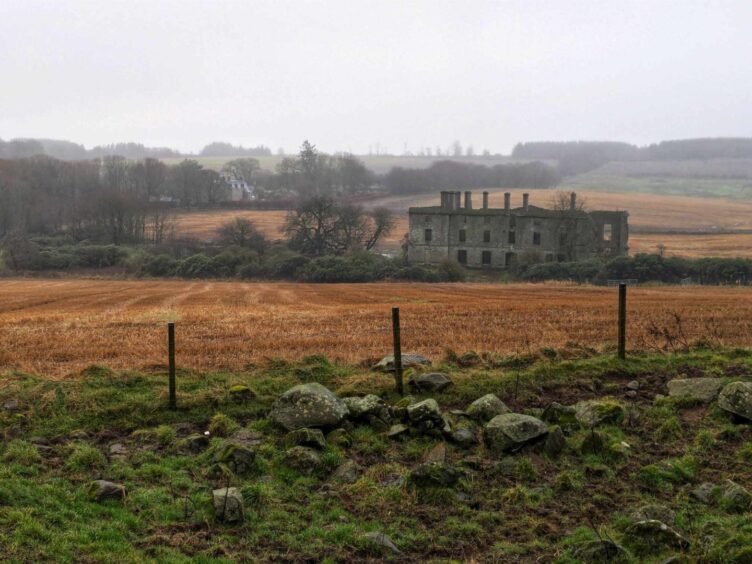
Conversation